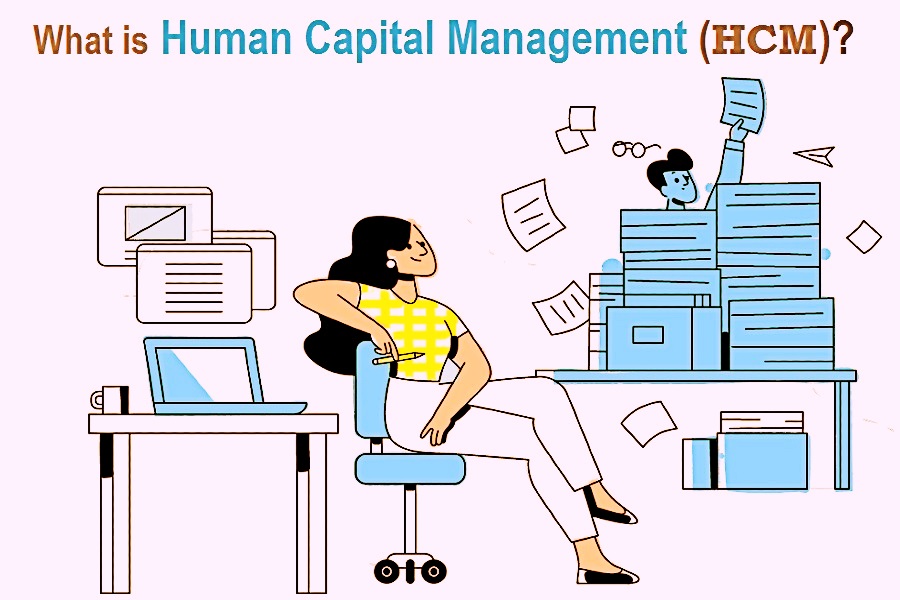Human capital management is a set of practices and processes related to hiring the right people, managing the workforce effectively and improving productivity.

What is Human Capital Management (HCM)?
Human Capital Management is the set of practices, concepts and processes implemented in organizations to manage productivity and employee satisfaction in the work environment.
In any organization, the human team that makes it up has always been considered one of the fundamental factors to achieve business success.
That is why human capital management is increasingly applied in the business sector with the intention of seeking the effective development of its employees, through strategic practices and processes.
Due to the social and technological advances observed in recent years, companies have needed to optimize different spheres of management in order to:
- improve work performance;
- achieve good results;
- meet the needs of their customers with maximum efficiency and agility.
Among the many strategies, investing in the development, motivation and productivity of employees has been one of the most satisfactory and profitable options.
In fact, until recently, the approach to the human resources, it was restricted to hiring, firing and controlling employee benefits. For this reason, it was recognized for having a mechanistic approach.
However, from the 80s, companies began to embark on a new path, understanding, in this way, that achieving better results is closely related to caring for the company with its staff.
This closer look at the needs and perspectives of employees has caused the Human Resources sector to position itself as the main responsible for the transformation of the work environment.
In this way, human capital is considered the main concern of organizations and, today, it is classified as the greatest asset of a company. But, ultimately, what is the relationship between HRM and HCM?
What is the Link between Human Resource Management and Human Capital Management?
There are many similarities between Human Resource Management (HRM) and Human Capital Management (HCM).
Both the HRM and HCM deal with the human resource department, which is the specialized office of an organization that deals with the workforce or employees and all related issues and concerns such as recruitment, employment, training, mentoring, development, performance appraisal, payroll, and other work-related services for employees.
The difference between HRM and HCM lies in their processes and their responsibilities to corporate routines. In essence, both types of management have essential roles in organizations.
Human Resource Management focuses its efforts on the development of a macro strategy thus generating a bridge between the company and its professionals. While Human Capital Management’s main challenge is to develop the skills of employees, thus leading to their commitment and maintaining a good work environment.
For example, HCM provides an ambiguous response and relates to elements such as personal management, organization management, human resource management, and develops employee development strategies and other operational goals.
Therefore, for the company to walk towards success, it is essential that these areas work as a team, align their strategies and complement each other.
When the organizational scheme of a company works successfully, it is mainly due to the effective management it has over its work team.
Over time, more and more tools are developed and applied so that the Human Resources unit can better analyze the data of the profiles that apply for a job.
This means that corporate leaders are increasingly focusing on how they manage their human capital, providing them with more specific skills, achieving HR objectives and goals, and developing a good organizational climate.
Why is Human Capital Management (HCM) Important in an Organization?
Human Capital Management (HCM) plays an important role in hiring, managing, training, retaining talented and high-performing employees, and orienting a new employee to the system.
HCM helps an organization in recruiting the right people. This will prevent it from hiring employees who don’t really deserve to be in the organization.
HCM sees employees as capital, which means that organizations can grow their capital in the future by investing in employees.
HCM helps employees upgrade their knowledge with time to cope up with the changing situations.
HCM helps optimize and maximize the value and ROI of the human capital in an organization.
HCM helps the organization increase the overall productivity of the organization and achieve its objectives.
HCM identifies needs in the human team and manages possible improvements.
HCM maintains the quality of its employees, perfecting their skills and training stages.
HCM deepens moral values, the sense of belonging, the spirit of teamwork and focuses on achieving common goals.





